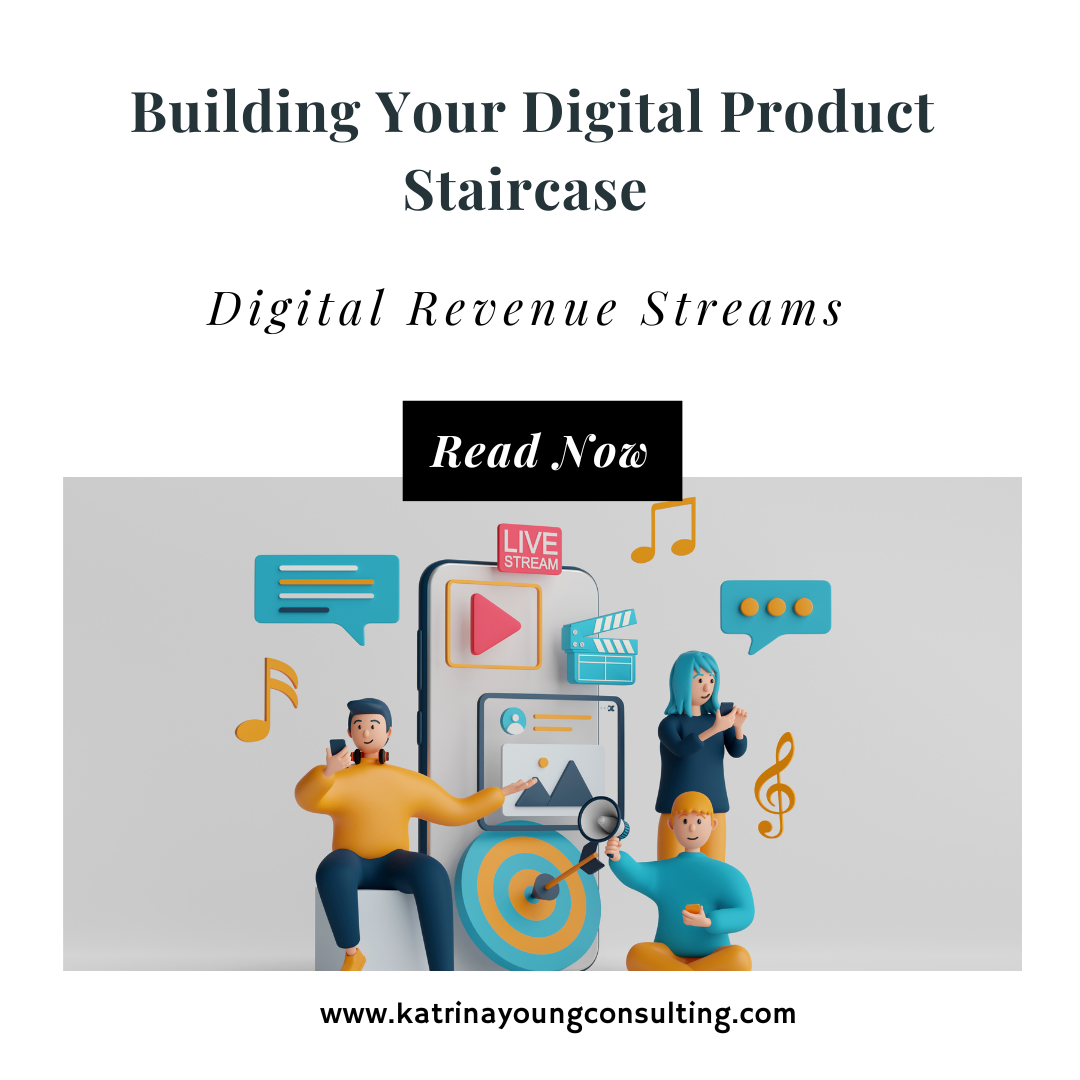Building Your Digital Product Staircase
Steps to Build a Successful Digital Product
Hey there, it's Katrina Young, and I'm excited to share my experiences of building successful digital products. Building a digital product can be a daunting task, but it's an essential part of any business that wants to stay competitive in the digital age. In this blog I'll share some steps that you can take to build a successful digital product, using the metaphor of a digital product staircase.
Businesses that fail to embrace digital transformation risk falling behind their competitors.
Now, let's dive into the steps to build a successful digital product staircase.
1. The Foundation - Research and Planning
The foundation of any successful digital product is research and planning. Before you start building your digital product, you need to identify your target audience, their pain points, and their needs. You also need to plan your product features and roadmap.
Action Points:
- Conduct market research and identify your target audience and their pain points.
- Plan your product features and roadmap.
- Create a product prototype and get feedback from potential users.
2. The First Step - MVP (Minimum Viable Product)
The first step of the digital product staircase is to build an MVP. An MVP is the smallest possible product that you can build to test your idea and validate your assumptions. It's a crucial step in the product development process because it allows you to get feedback from customers and make informed decisions about what features to add next.
Action Points:
- Identify the key features of your MVP.
- Build a simple prototype that showcases your MVP features.
- Test your MVP with potential users and get feedback.
3. The Second Step - Scaling and Growth
The second step of the digital product staircase is to scale and grow your digital product. This step involves adding more features, improving user experience, and increasing user adoption.
Action Points:
- Identify the features that will improve the user experience and add value to your digital product.
- Implement a user feedback loop to gather feedback and make informed decisions about what features to add next.
- Invest in user acquisition and retention strategies to grow your user base.
4. The Third Step - Iteration and Improvement
The third step of the digital product staircase is to iterate and improve your digital product. This step involves continually refining your product to meet the changing needs of your users and the market.
Action Points:
- Monitor user feedback and behaviour to identify areas of improvement.
- Implement iterative changes to improve the user experience and add value to your digital product.
- Continually test and validate new features to ensure they meet the needs of your users.
Useful Resources and Tools
Building a successful digital product requires a lot of resources and tools. Here are some of the most useful resources and tools that I've used:
- Product management tools like Asana and Trello
- Design tools like Sketch and Figma
- Development tools like GitHub and CodePen
- Analytics tools like Google Analytics and Mixpanel
- User research tools like SurveyMonkey and Qualtrics
Action Points
If you're looking to build a successful digital product, here are some action points to get started:
1. Conduct market research and identify your target audience and their pain points.
2. Plan your product features and roadmap.
3. Build an MVP that validates your assumptions and tests your idea.
4. Scale and grow your digital product by adding more features and improving user experience.
5. Continually iterate and improve your digital product to meet the changing needs of your users and the market.
Building a successful digital product is a journey that requires careful planning, continuous improvement



